I found this wild growing apple some years ago in the woods near my home. The wonderful red-brown-orange color on the back appeared soon after debarking, no dye here. It has eight nipple knots on the back, is that cool? The little sapling had a diameter of about 2”, full width can be seen at the handle. It has grown dead straight but with a good propeller twist. I heated out some amount of the twist, but some is remaining. I made a compromise to minimize that twist and accepted heavy grain run out, the string shows the grain direction. Cross section is lenticular. I did some corrections with the heat gun, alignment, untwisting. I gave her long fades, widest part of limb is 7” from handle. The handle is straight and covered with cherry bark, glued on with TB3 after 15 min cooking. The cord is hemp. Tip overlays is two tone (brown and nearly transparent) cow horn.
She turned out as a surprisingly good shooter, apple is definitely class A bow wood.
Specs:
66½” ntn
70’/28”
mass: 644 grams
w/d handle: 24/46 mm
w/d fade: 48/18 mm
w/d midlimb: 3/16 mm
wd tips: 13/13 mm (below horn)
10”: 13,6
12”: 21,8 (+ 7,7)
14”: 28,5 (+ 7,2)
16”: 34;7 (+ 7,2)
18”: 40,5 (+ 5,8)
20”: 46,5 (+ 6,0)
22”: 52,2 (+ 5,7)
24”: 58,3 (+ 6,1)
26”: 64,0 (+ 5,7)
28”: 70,0 (+6,0)
The back view shows the long fades
Heat treated to about 2” reflex and after shot in she still holds ½”
8 nipples on the back.
The nipples came from alive branches, I cut them with about ¼”.
Nipples on the back …
… and viewed from belly
Here is the pic showing the grain running out, string shows direction
if you look close you can see the grain turning to the right
The cherry bark handle has a leather triangle insert for arrow shelf
Here is the joint of the bark at the back
You can see the pith and some drying cracks developing from there.
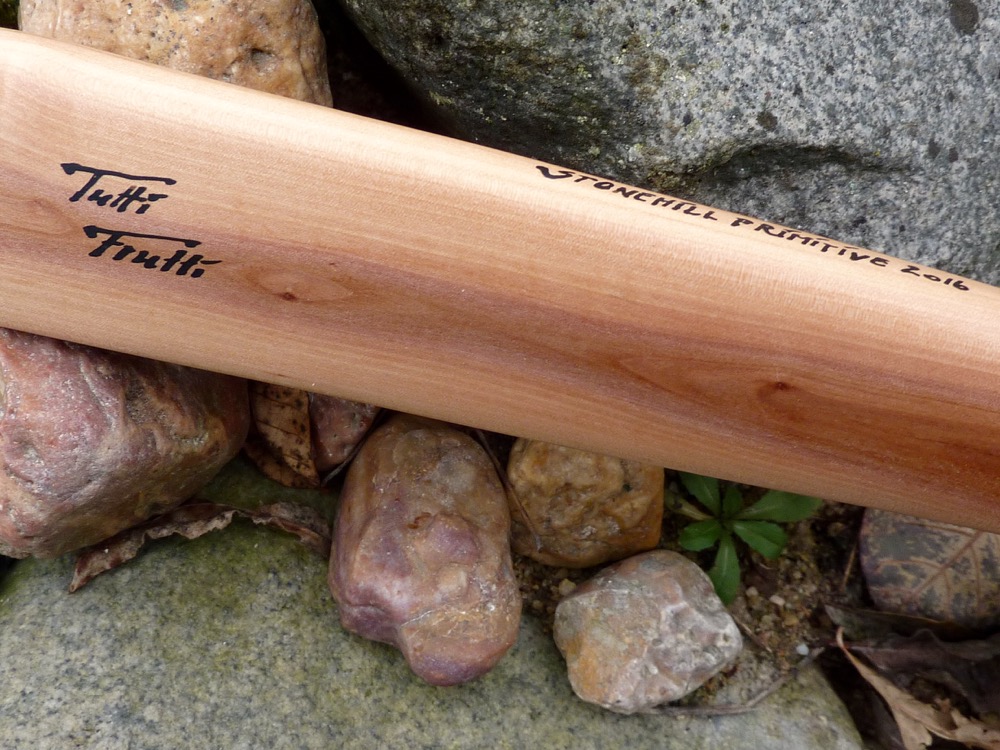
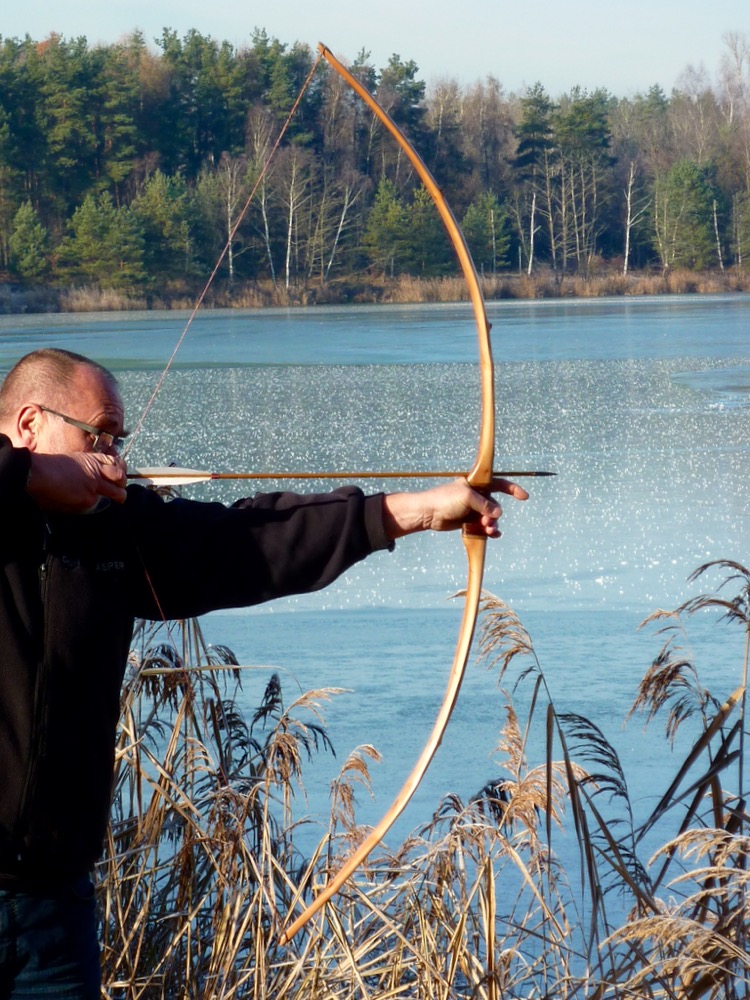
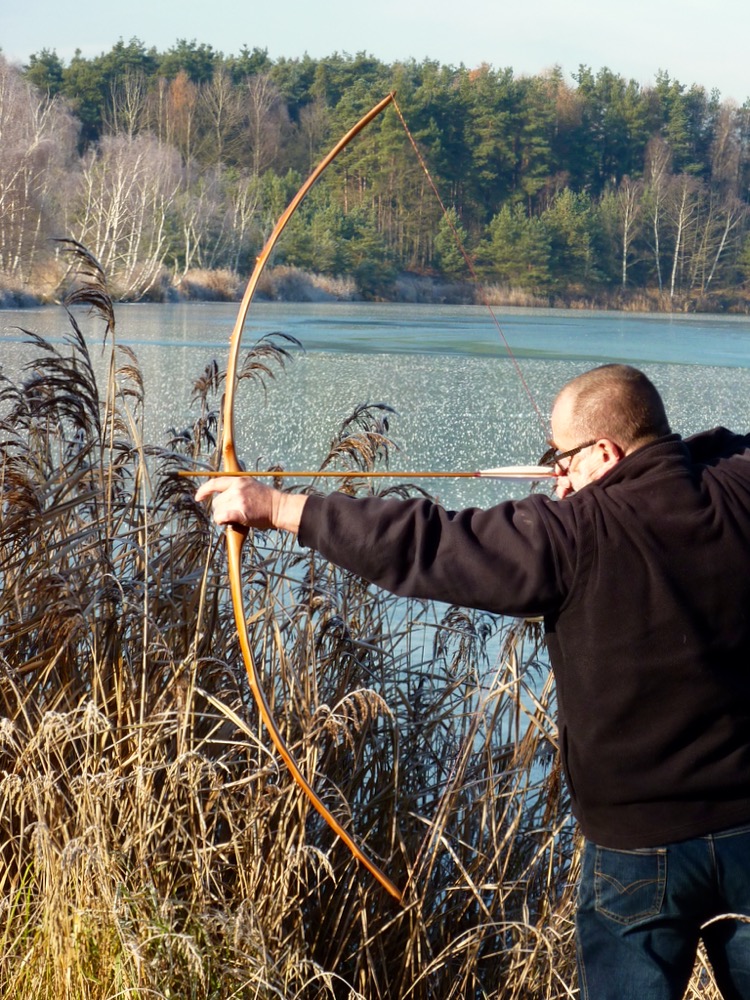




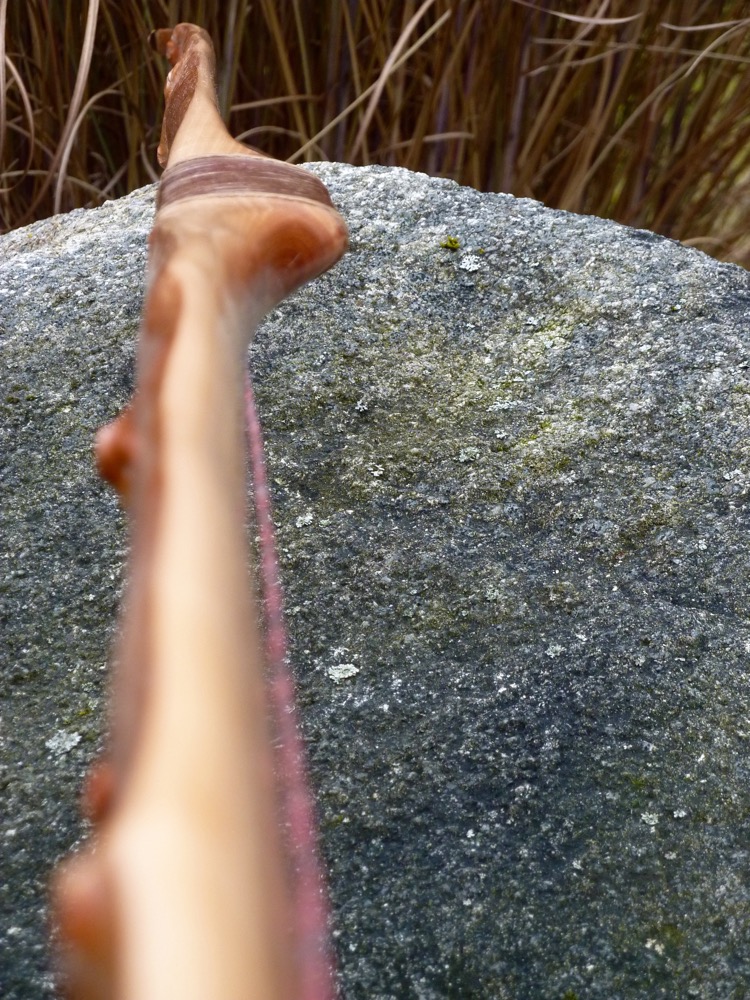
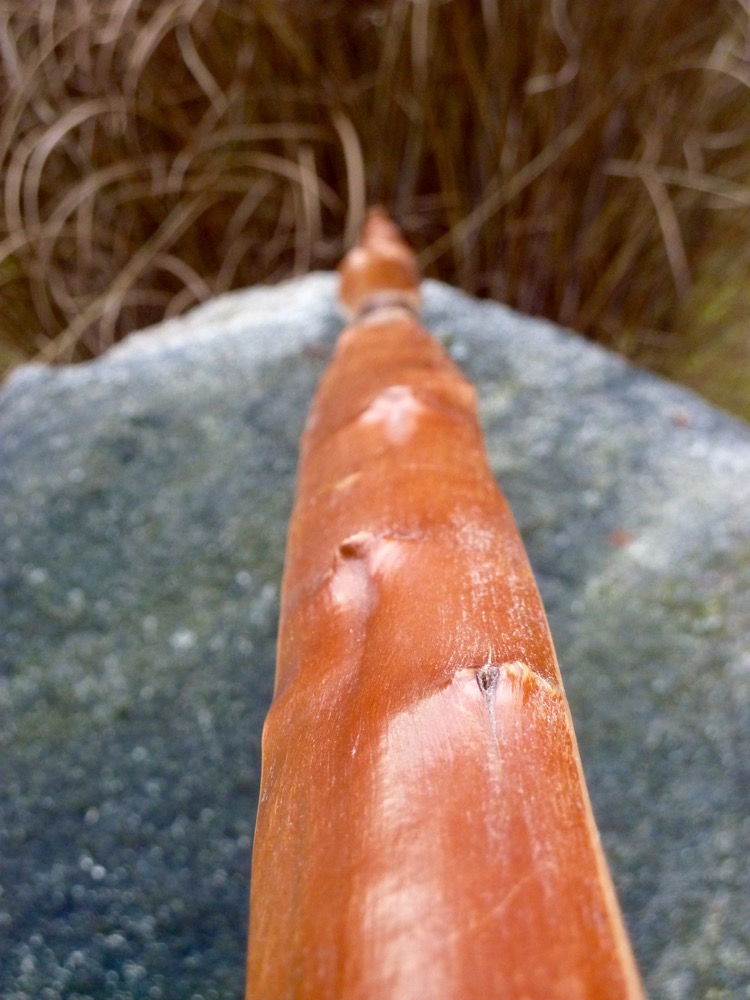

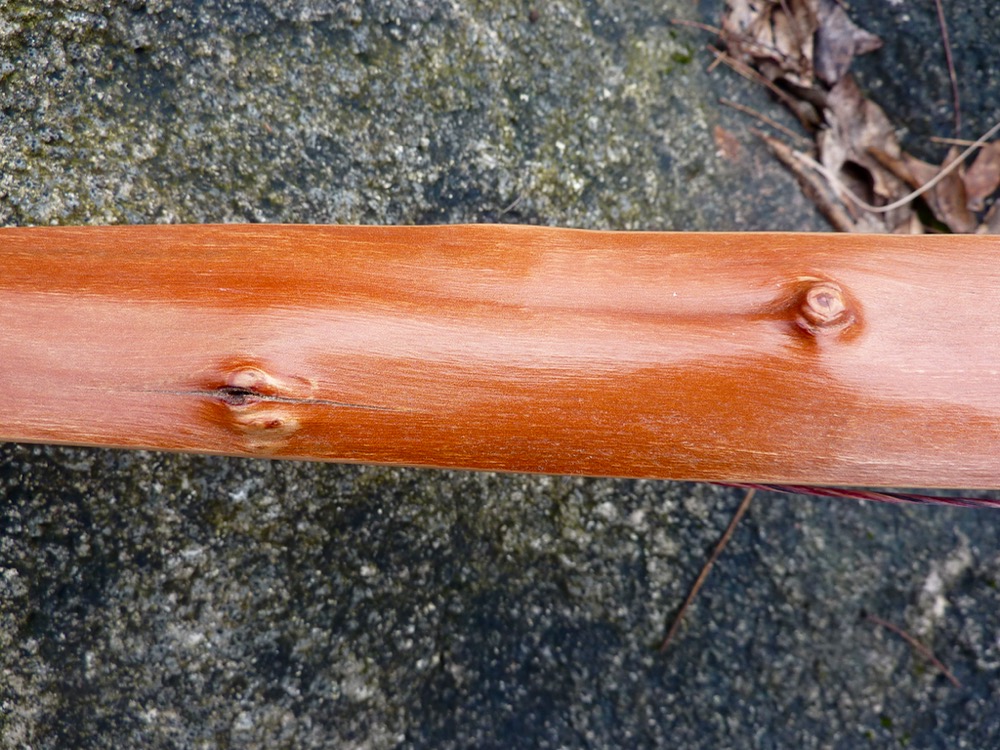
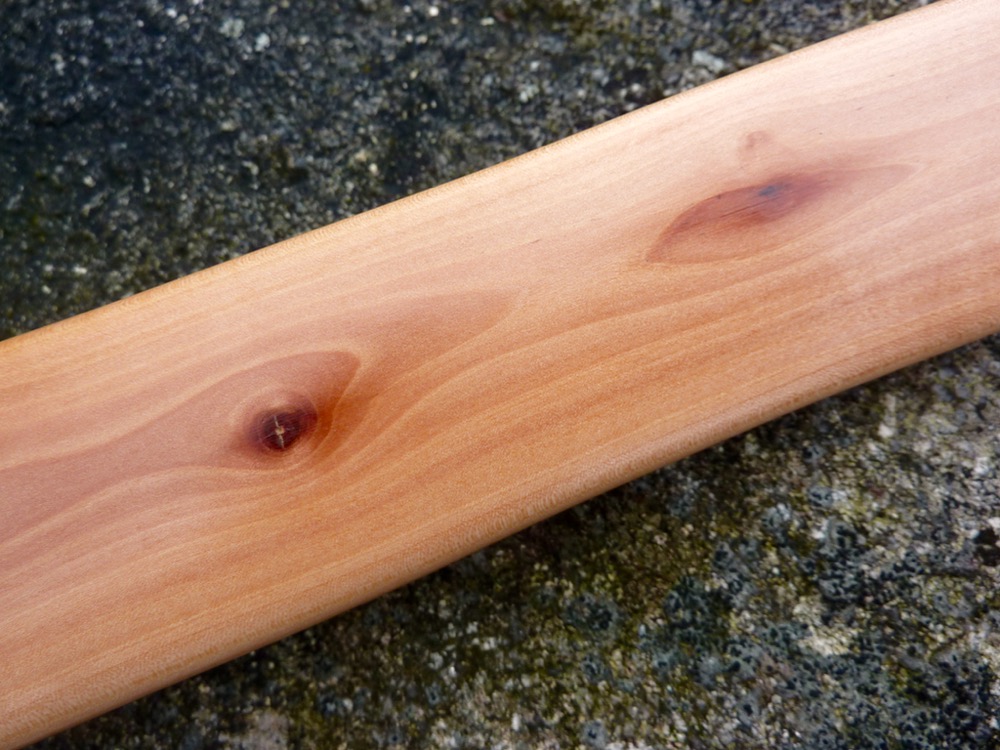
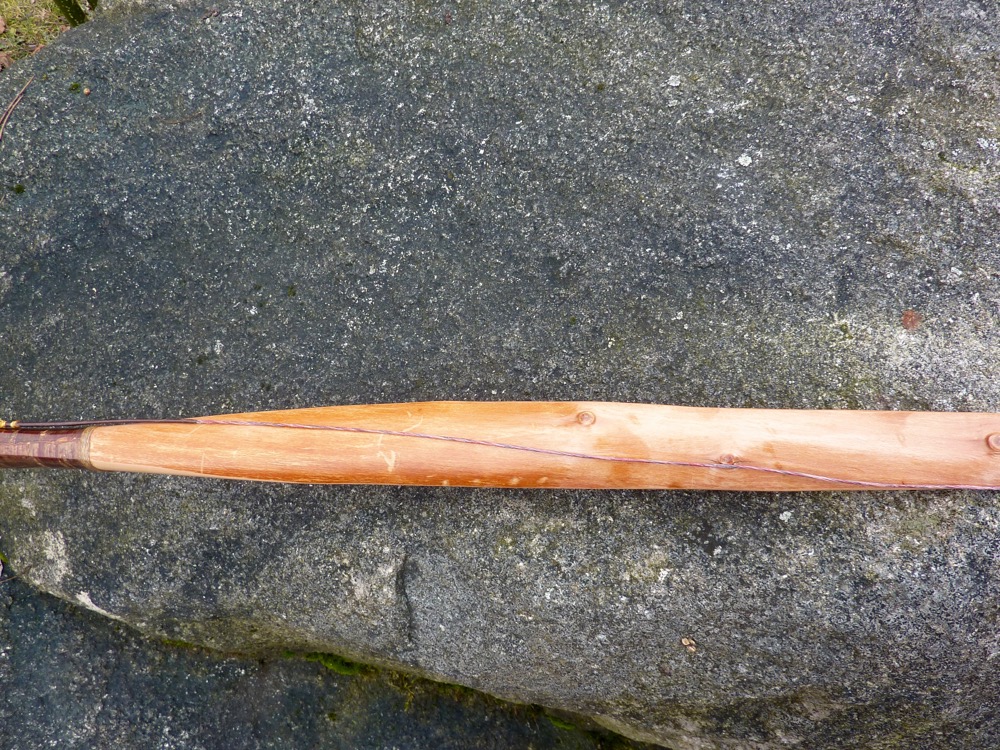
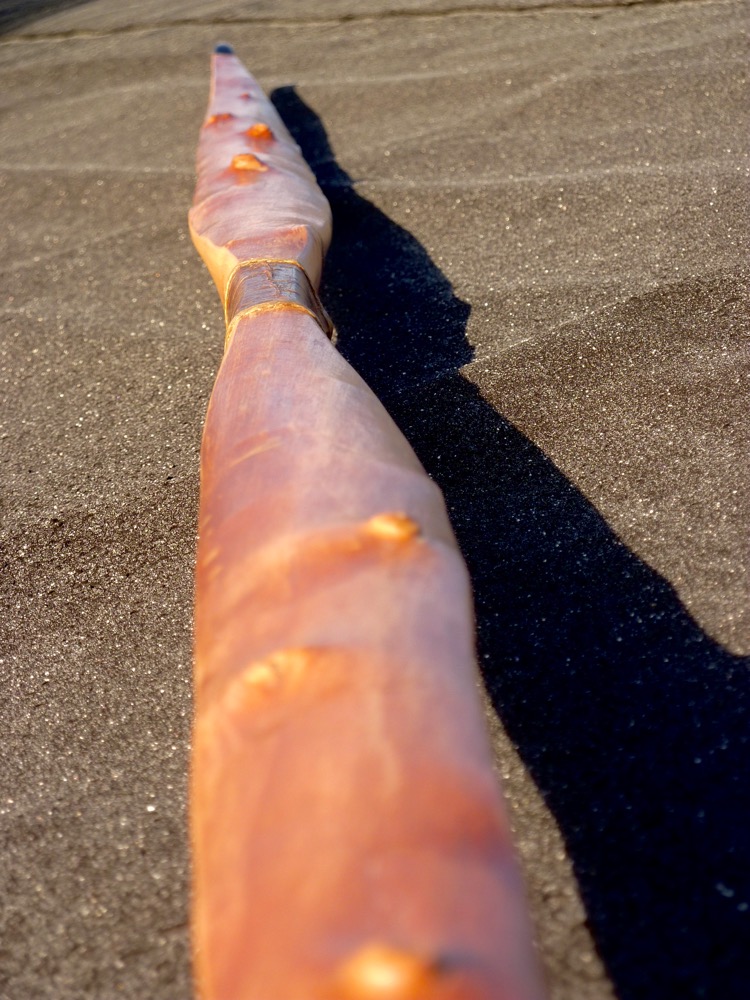
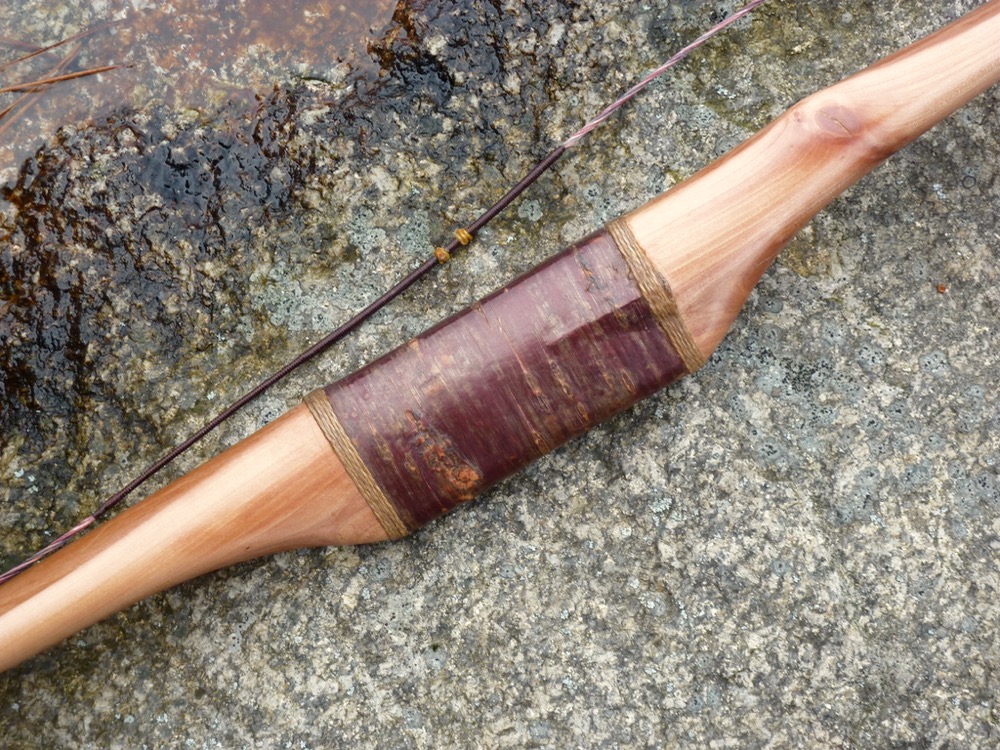

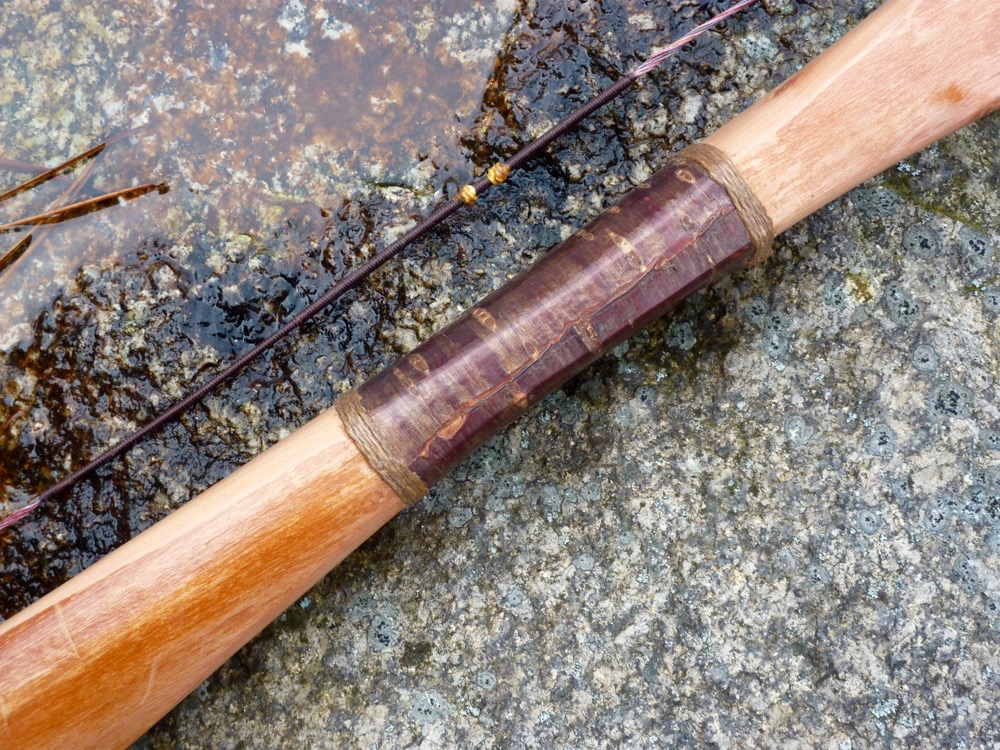
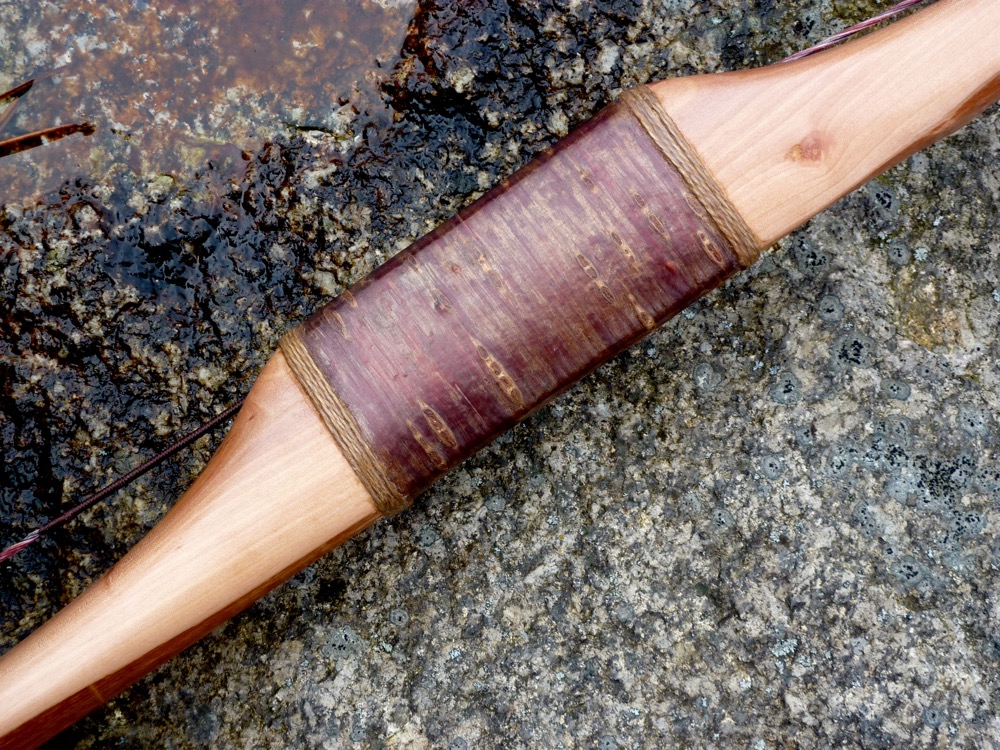
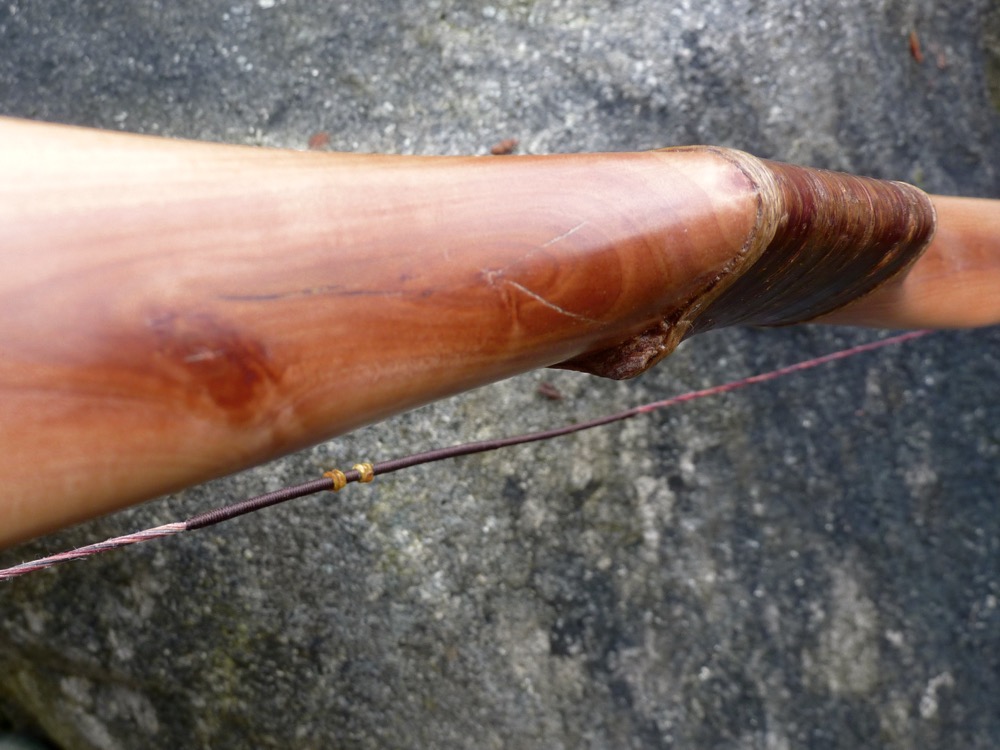
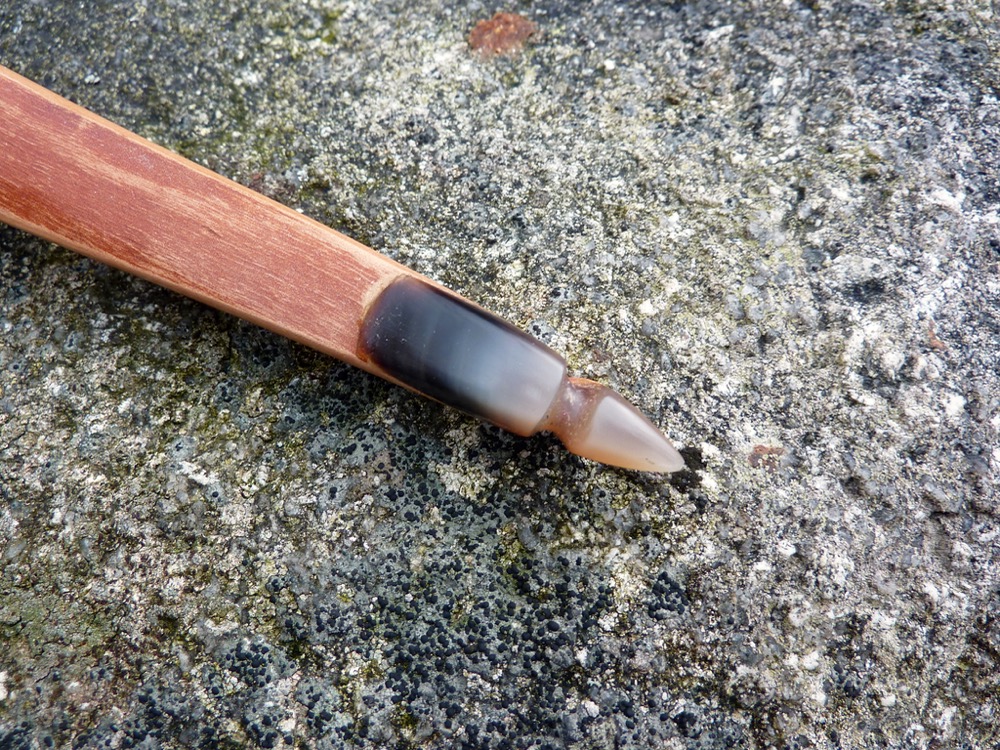
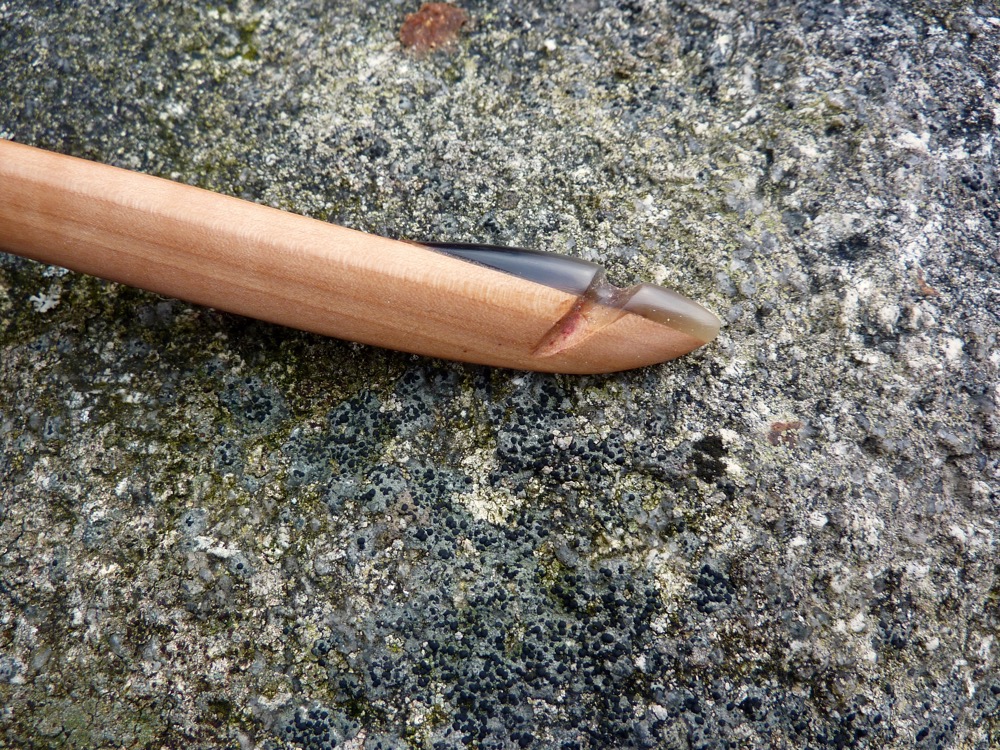
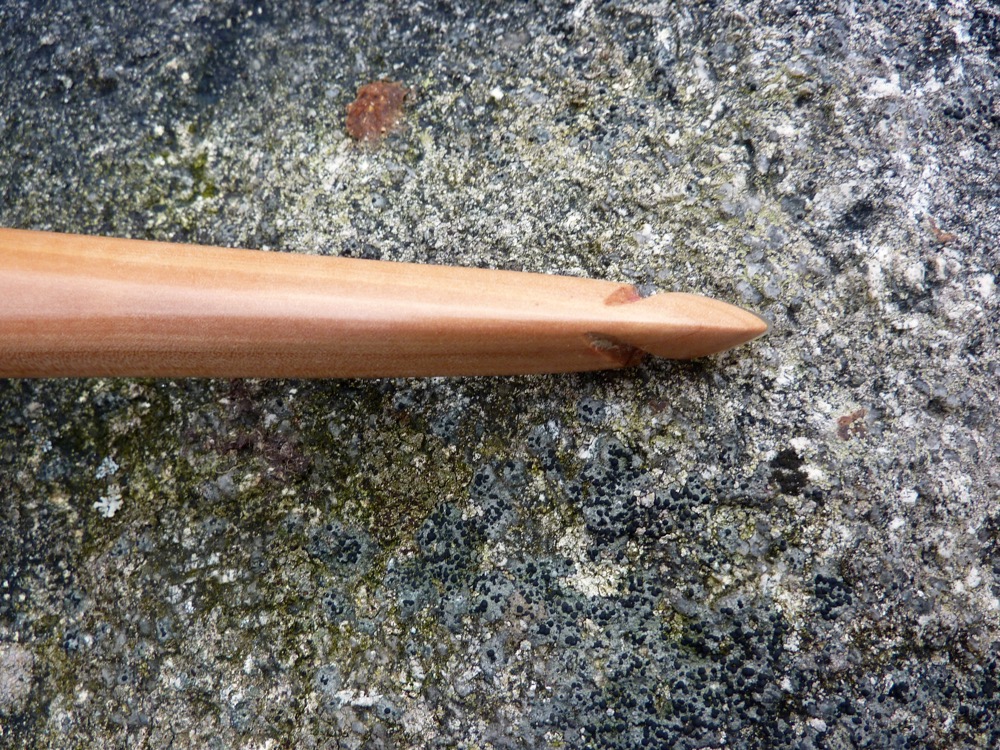

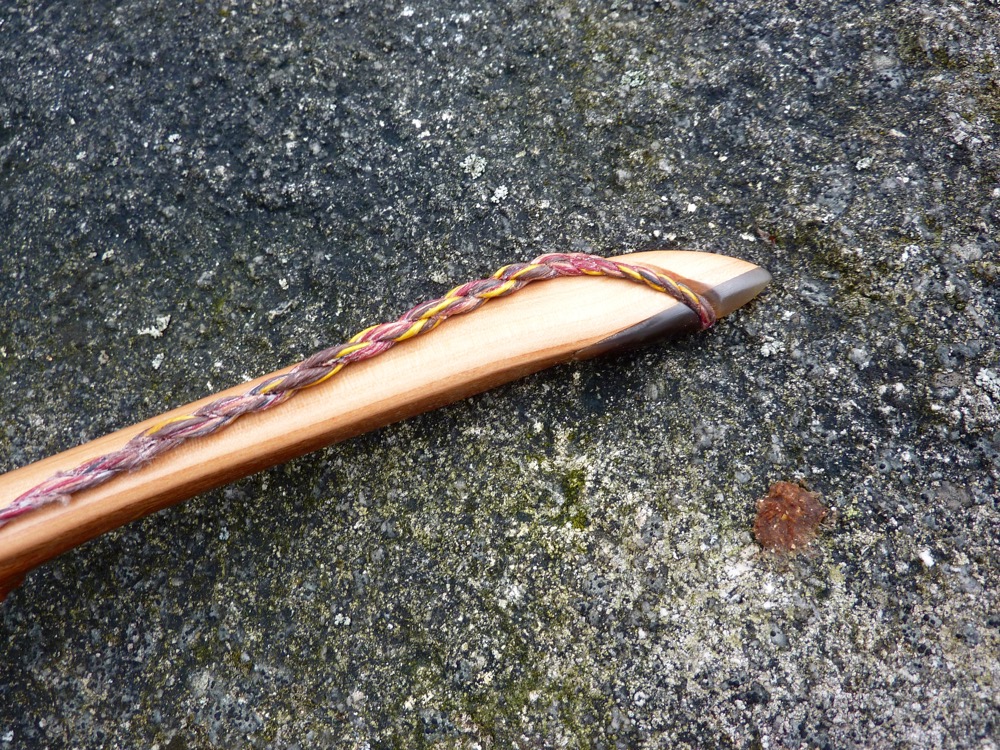
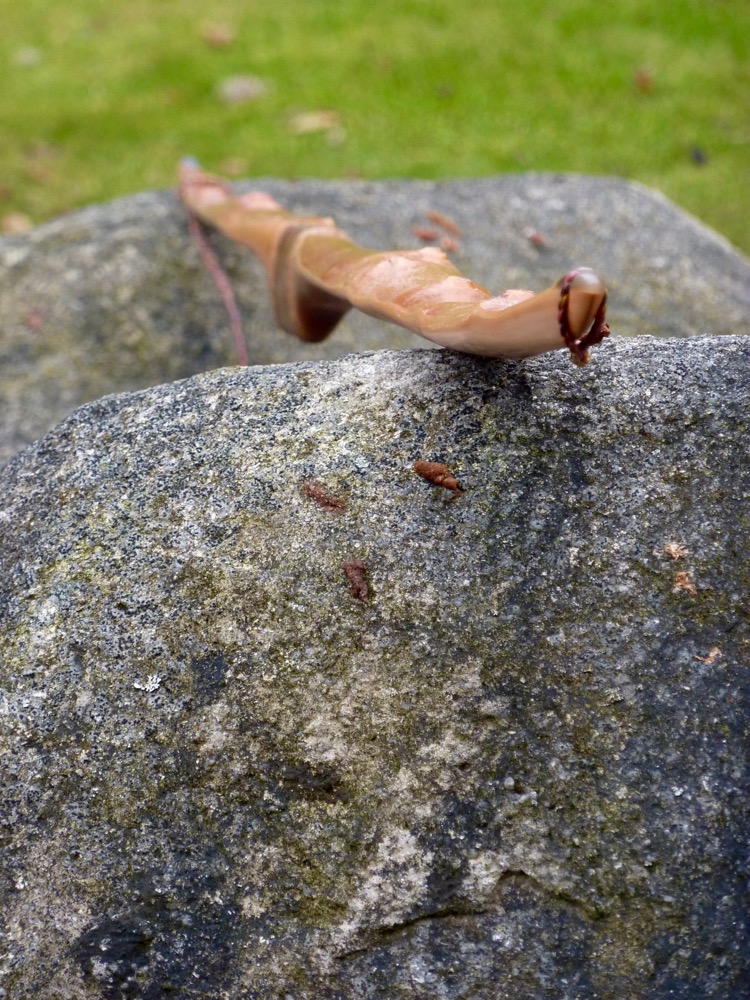
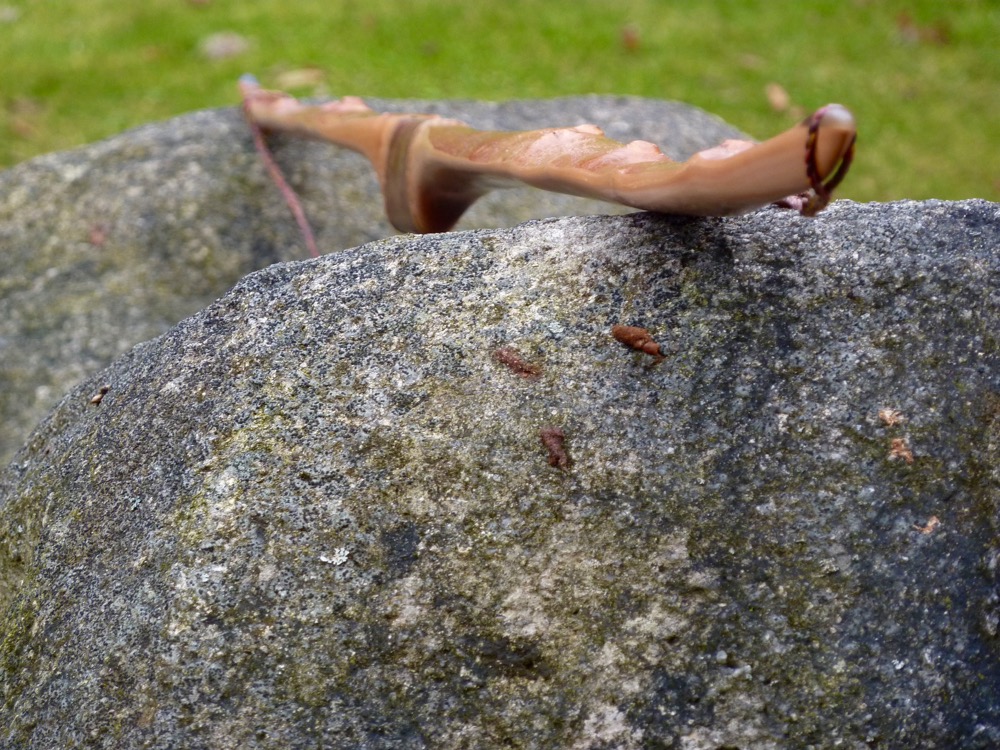
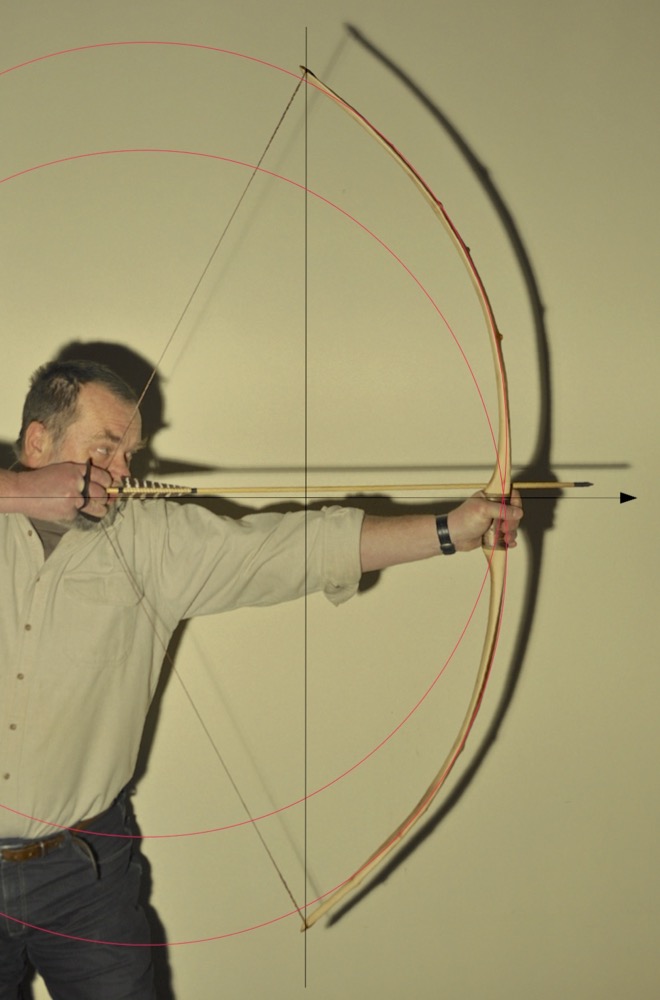
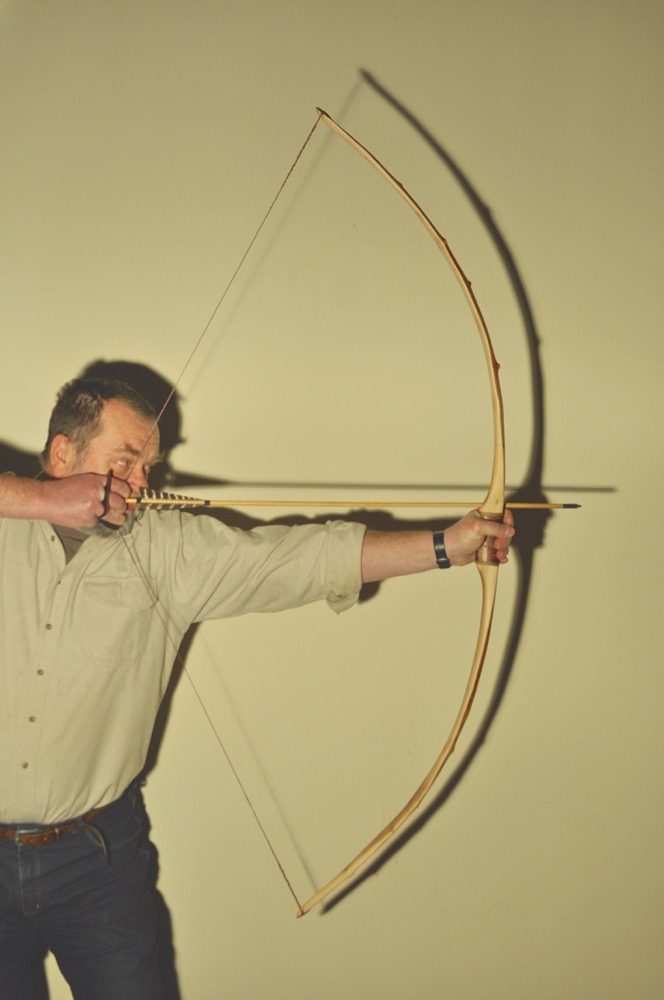
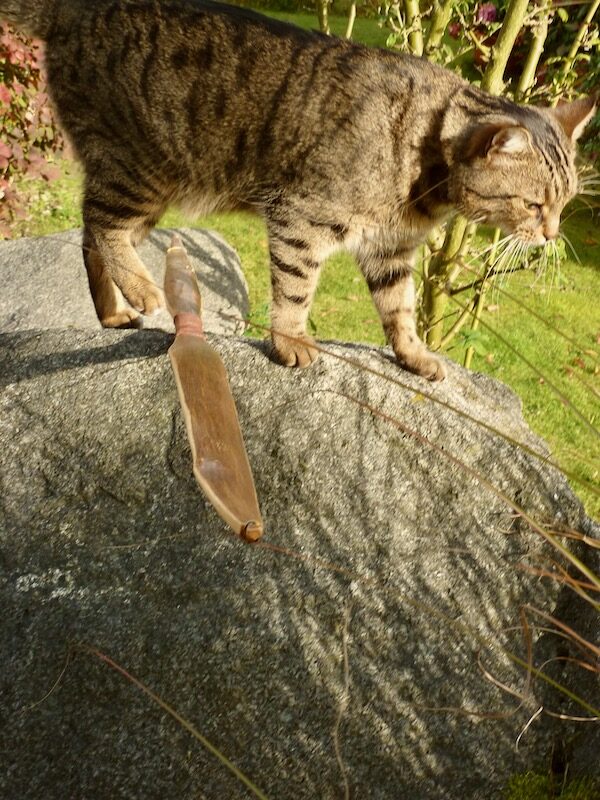
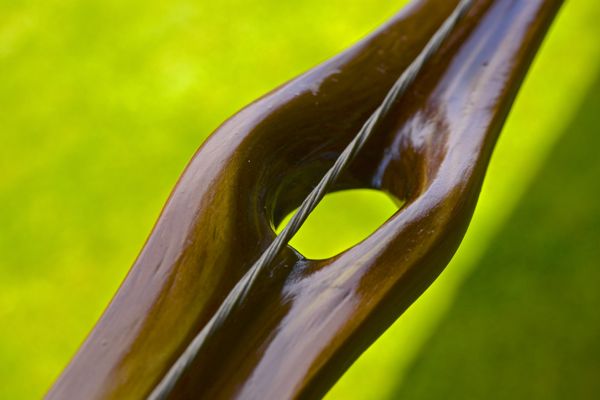
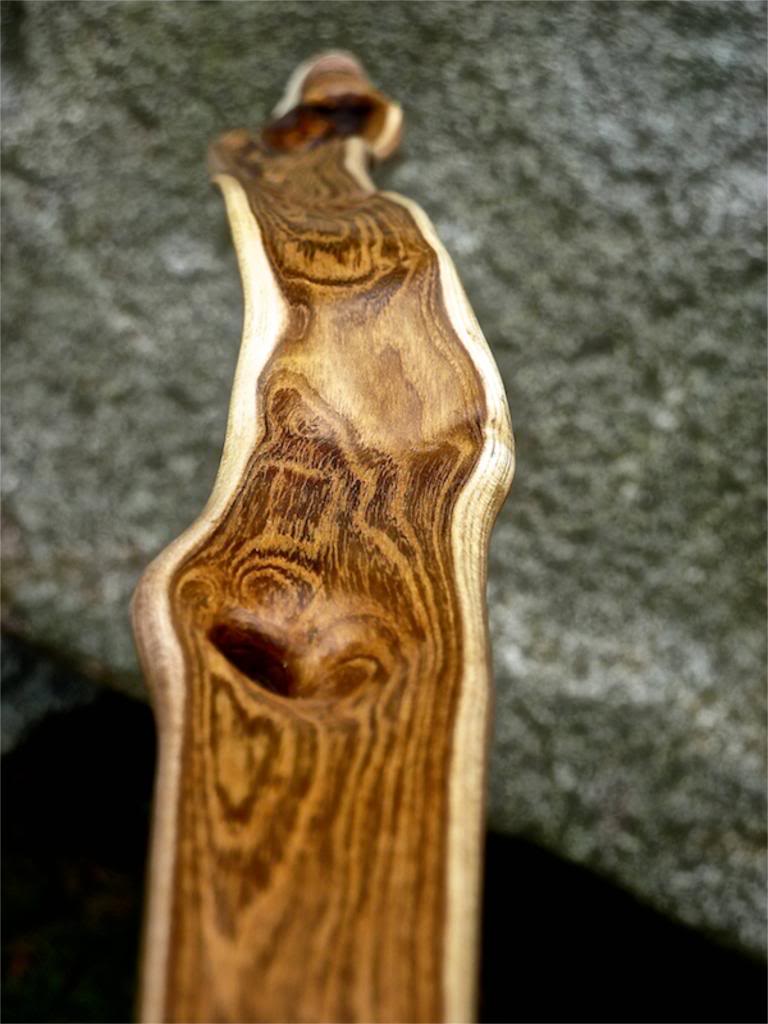
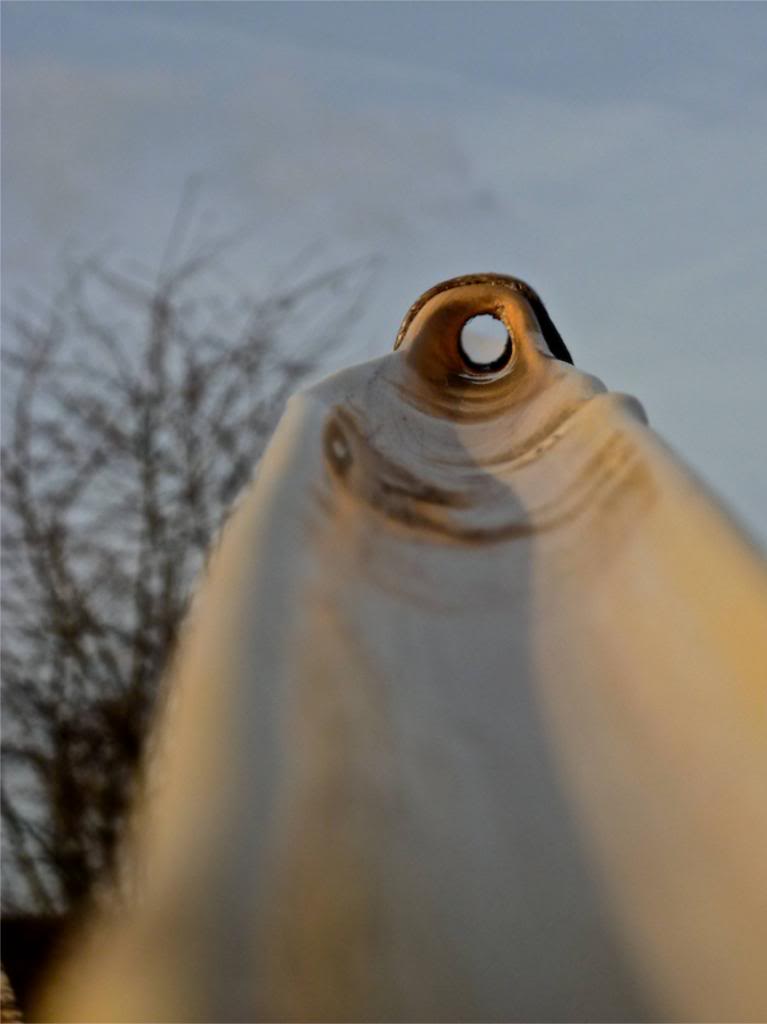
7 Comments
Hello Simon,
this is really a beautiful bow. I’m currently also working on an apple stave (a little less straight and clean than yours though). How did you preserve the nice brown/reddish back color through steaming or heating? In my first experiments, steaming seems to wash out the color and heating (I used lineseed oil, maybe that was the mistake) also lightens the color.
ciao
Pablo
Pablo,
there was no steam on the bow, all corrections are done with dry heat (heat gun). The heat was applied only on the bellyside, so it didn’t affect the back.
Good luck with your project!
Simon,
thanks, seems obvious after your comment now ;-). It is probably also better for the stability of the back. Btw. which tool did you use for removing the bast fibers. I used a piece of maple with a thin edge for scraping, but one has to be careful about pressure and undulations in the back to avoid stronger streaks.
ciao
Pablo
Pablo, I have stripped of the bark and bast fibers in one piece without anything left (if I remember right, it was early spring and the tree just begun to transport moisture to the crown).
But here is a tip, which works on several woods:
clamp the bow horizontally in your vice, back upwards. Now wet the surface where cambium/bast fibers are remaining. Use a sponge or a tissue. Wait a few minutes and you will notice that the cambium softens and can be pulled off easily. Repeat the wettening if necessary. Sometimes a strong brush is the right tool to scratch out the wet bast fibers of grooves and holes.
Ciao Simon
Magical bow, Simon. I really like it.
I would like to ask you why you have choose to do it with long fades. Is it better for pyramid bows? ( I understand this is a pyramid bow design).
And another one if you are so kind: What´s the meaning of those “(+ 5,8), (+ 6,0)” and so numbers beside the relation draw length-draw weight.
Thank you.
Juan Antonio.
Hi Juan Antonio,
thank you for your nice comment!
I simply like the long fades, in my eyes the bow looks way more elegant. You have to react on that in the tillering process – a more oval shaped side profile is the right matching profile.
Numbers:
the first is draw length for example 28″, the next is the weight at this length (here 70#), the number (+6,0) is the difference to draw length 26″.
Adios
Simon
Oouh, what a shame, I didn´t notice!.
Your last answer to Pablo has been also very helpful with the cambium thinn fibers of my salamo (Calcophyllum candidissimum) staves, here in Costa Rica.
But now as I go back to Spain, where I was born, I can´t wait to try something with apple trees after seeing your Tutti Frutti.
Vielen Dank für inher Antworten. Auf Wiedersehen.
Juan Antonio.